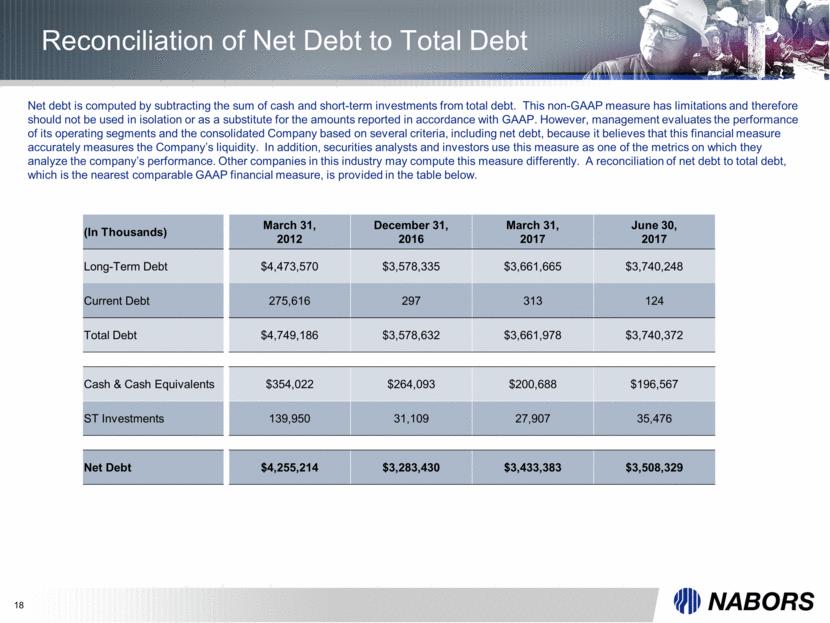Attached files
| file | filename |
|---|---|
| EX-99.1 - EX-99.1 - NABORS INDUSTRIES LTD | a17-18627_2ex99d1.htm |
| 8-K - 8-K - NABORS INDUSTRIES LTD | a17-18627_28k.htm |
Exhibit 99.2
2Q17 Earnings Presentation August 2, 2017 Presented by: Anthony G. Petrello Chairman, President, & Chief Executive Officer William J. Restrepo Chief Financial Officer

2 We often discuss expectations regarding our future markets, demand for our products and services, and our performance in our annual, quarterly, and current reports, press releases, and other written and oral statements. Such statements, including statements in this document that relate to matters that are not historical facts, are “forward-looking statements” within the meaning of the safe harbor provisions of Section 27A of the U.S. Securities Act of 1933, as amended and Section 21E of the U.S. Securities Exchange Act of 1934, as amended. These “forward-looking statements” are based on our analysis of currently available competitive, financial and economic data and our operating plans. They are inherently uncertain, and investors should recognize that events and actual results could turn out to be significantly different from our expectations. Factors to consider when evaluating these forward-looking statements include, but are not limited to: fluctuations and volatility in worldwide prices of and demand for natural gas and oil; fluctuations in levels of natural gas and oil exploration and development activities; fluctuations in the demand for our services; competitive and technological changes and other developments in the oil and gas and oilfield services industries; our ability to complete, and realize the expected benefits of, strategic transactions, including our announced joint venture in Saudi Arabia; the existence of operating risks inherent in the oil and gas and oilfield services industries; the possibility of changes in tax laws and other laws and regulations; the possibility of political or economic instability, civil disturbance, war or acts of terrorism in any of the countries in which we do business; and general economic conditions, including the capital and credit markets. Our businesses depend, to a large degree, on the level of spending by oil and gas companies for exploration, development and production activities. Therefore, sustained lower oil or natural gas prices that have a material impact on exploration, development or production activities could also materially affect our financial position, results of operations and cash flows. The above description of risks and uncertainties is by no means all-inclusive, but is designed to highlight what we believe are important factors to consider. For a discussion of these factors and other risks and uncertainties, please refer to our filings with the Securities and Exchange Commission ("SEC"), including those contained in our Annual Reports on Form 10-K and Quarterly Reports on Form 10-Q, which are available at the SEC's website at www.sec.gov. Forward-Looking Statements
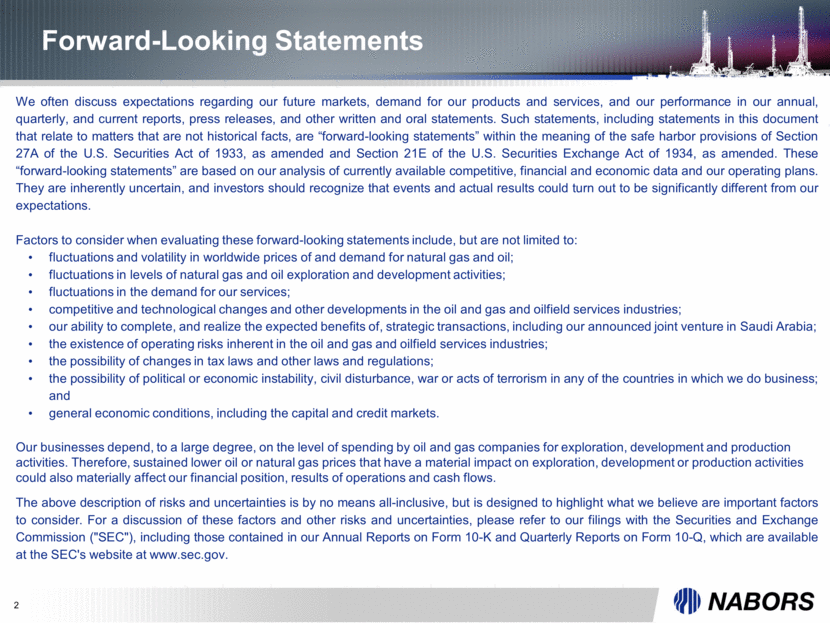
3 Non-GAAP Financial Measures This presentation refers to certain “non-GAAP” financial measures, such as adjusted EBITDA, adjusted operating income (loss) and net debt. The components of these non-GAAP measures are computed by using amounts that are determined in accordance with accounting principles generally accepted in the United States of America (“GAAP”). A reconciliation of adjusted EBITDA and adjusted operating income (loss) to income (loss) from continuing operations before income taxes and net debt to total debt, which are their nearest comparable GAAP financial measures, is provided in the Appendix at the end of this presentation.
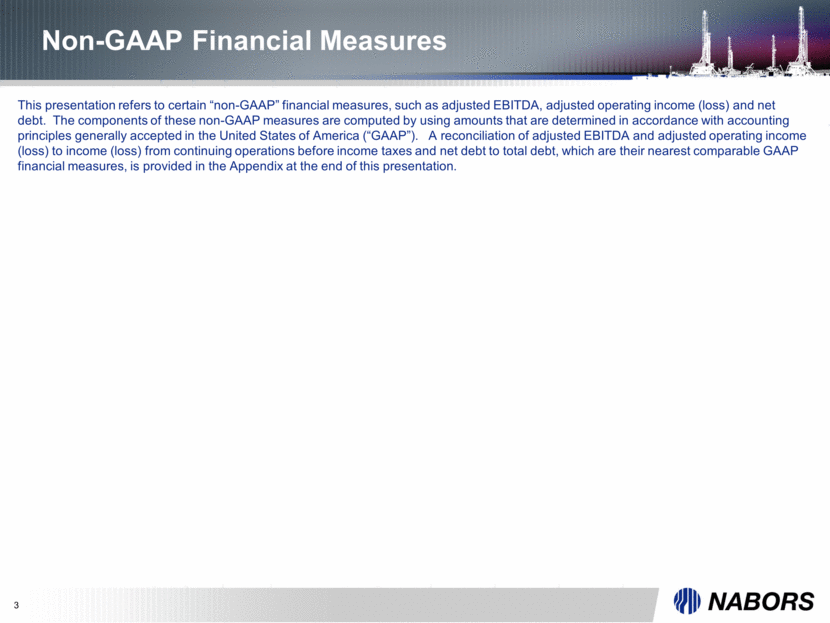
4 Recent Company Highlights Deployment of 11 rigs in 2Q17 in the lower 48 (including two new PACE®-X rigs), finishing the quarter at 101 rigs on revenue Currently operating 102 rigs in the lower 48 states with all PACE®-X and PACE®-M800 rigs fully utilized International rig count increased for the first time on a quarter-by-quarter basis since 2Q15, averaging 92.7 rigs vs. 89.8 rigs in the prior quarter Canadian activity percentage of increase vs. prior year exceeded the lower 48 rebound (avg. 12.4 rigs in 2Q17 vs. 4.2 in 2Q16, and 15 currently working) Increased Nabors Drilling Solutions Adjusted EBITDA by 159% Market penetration continues to rise in all service lines, and price improving as technology gains acceptance

5 Financial Overview
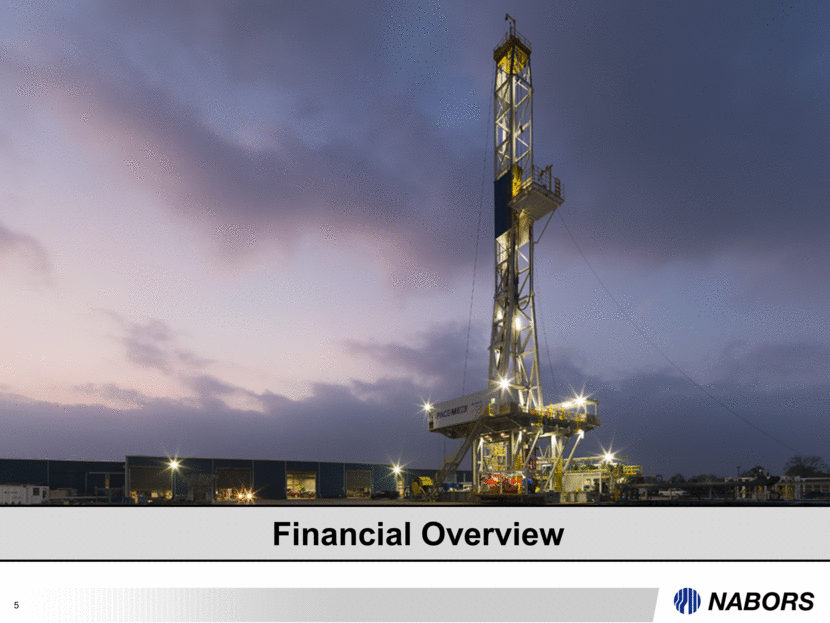
6 Financial Summary Diluted Earnings (Losses) Per Share from continuing operations Includes impairments of $0.39 per share related to our holdings in C&J Energy Services, Ltd. and other assets Includes impairments of $0.87 per share related to the impairment of certain assets and other charges ($000 except EPS) 2Q16 3Q16 4Q16 1Q17 2Q17 Operating Revenues $571,591 $519,729 $538,948 $562,550 $631,355 Adjusted EBITDA 165,508 148,739 146,021 99,740 138,796 Adjusted Operating Income (Loss) (53,405) (71,974) (70,166) (103,932) (69,294) GAAP Diluted EPS(1) (0.65)(2) (0.35) (1.17)(3) (0.52) (0.41)

7 Debt and Liquidity As of June 30, 2017 1. Capitalization defined as Net Debt plus Total Equity 2. Coverage defined as TTM Adjusted EBITDA / TTM Interest Expense 3. Leverage defined as Net Debt / TTM Adjusted EBITDA Note: Subtotals may not foot due to rounding Liquidity (at June 30, 2017) Cash & Available Capacity: $2,210 High 4Q16 1Q17 2Q17 Change ($MM's) 3/31/2012 12/31/2016 3/31/2017 6/30/2017 2Q17 from 1Q17 Total Debt $4,750 $3,579 $3,662 $3,740 $78 Cash and ST Investments 494 295 229 232 3 Net Debt $4,256 $3,283 $3,433 $3,508 $75 Total Equity 5,823 3,255 3,186 3,073 (113) Net Debt to Capitalization(1) 42% 50% 52% 53% 1% Coverage(2) 7.8x 3.4x 2.9x 2.6x (0.3x) Leverage(3) 2.2x 5.3x 6.1x 6.6x 0.4x
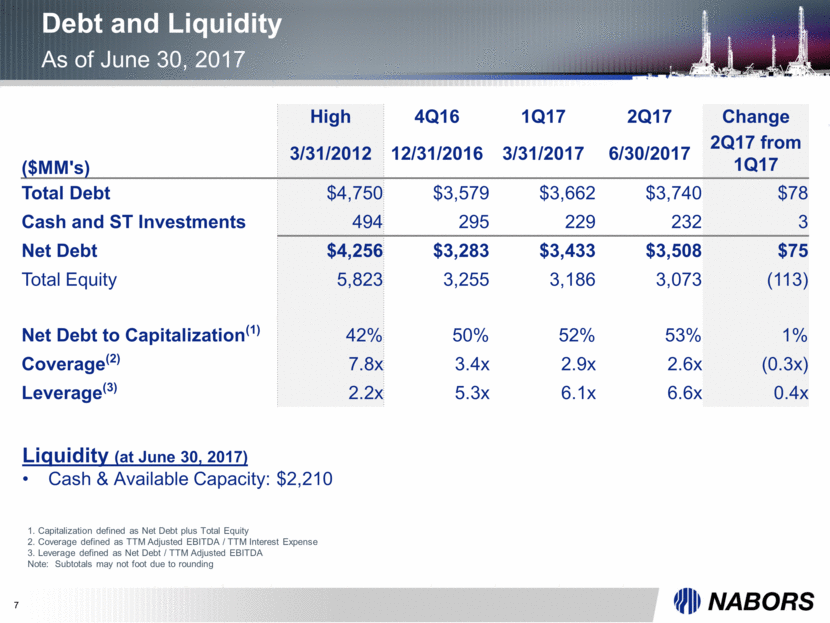
8 Drilling and Rig Services
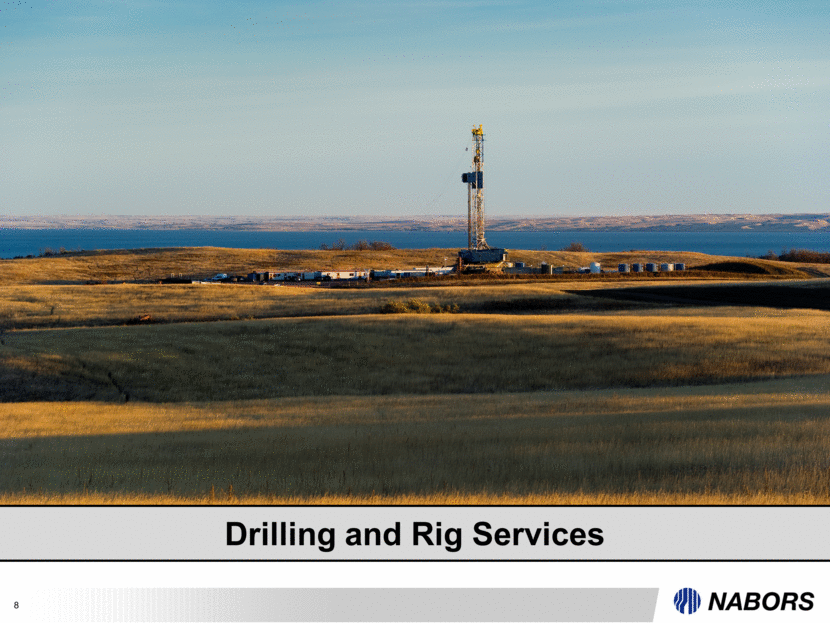
Rig Fleet(1) 2Q17 Average Rigs Working Average Utilization U.S. Lower 48 AC ≥ 1500HP 111 80 72% AC Others 72 12 17% SCR Rigs 24 3 10% U.S. Lower 48 Total 207 95 46% U.S. Offshore 17 3 15% Alaska 16 3 19% Canada 47 12 26% International 160 93 58% Subtotal 447 206 46% Pace®-X Rig Construction 1 Pace®-R Rig Construction 1 Pace®-M1000 Rig Construction 4 Total Fleet 453 9 2Q17 Rig Utilization & Availability As of 06/30/17 Note: Subtotals may not foot due to rounding
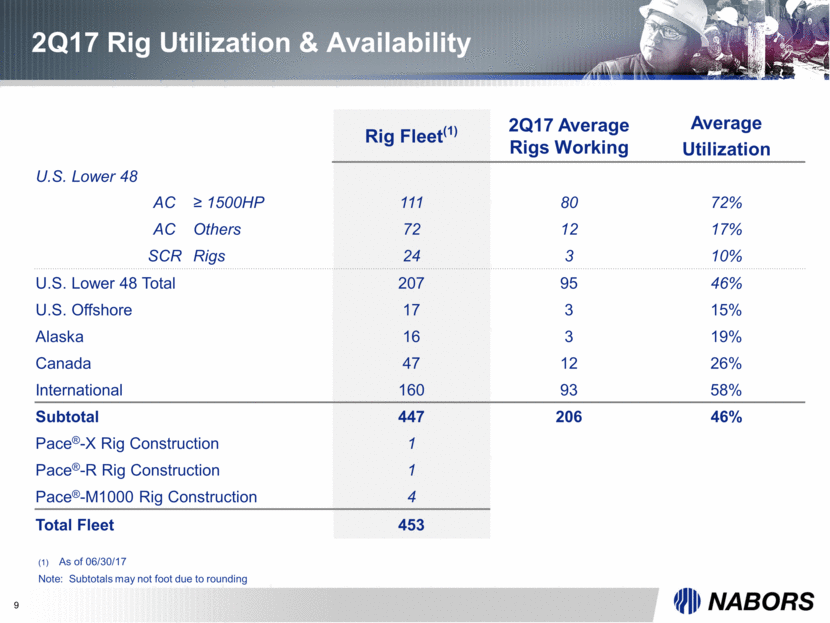
10 Lower 48 Rig Utilization by Type As of June 30, 2017 Walking Skidding Pad Not Pad Total Capable Capable Rigs Active Total Util. Active Total Util. Active Total Total Active Total Util. Active Total Util. AC 84 135 62% 8 20 40% 92 155 59% 6 28 21% 98 183 54% PACE®X 45 46 98% 0 0 0% 45 46 98% 0 0 0% 45 46 98% PACE®M800 6 6 100% 0 0 0% 6 6 100% 0 0 0% 6 6 100% PACE®B 19 28 68% 0 0 0% 19 28 68% 1 1 100% 20 29 69% PACE®S 8 9 89% 2 2 100% 10 11 91% 0 0 0% 10 11 91% PACE®F 0 4 0% 2 6 33% 2 10 20% 2 8 25% 4 18 22% PACE®M550 5 30 17% 4 8 50% 9 38 24% 3 18 17% 12 56 21% Other AC Rigs 1 12 8% 0 4 0% 1 16 6% 0 1 0% 1 17 6% Legacy 0 3 0% 3 5 60% 3 8 38% 0 16 0% 3 24 13% Total 84 138 61% 11 25 44% 95 163 58% 6 44 14% 101 207 49%
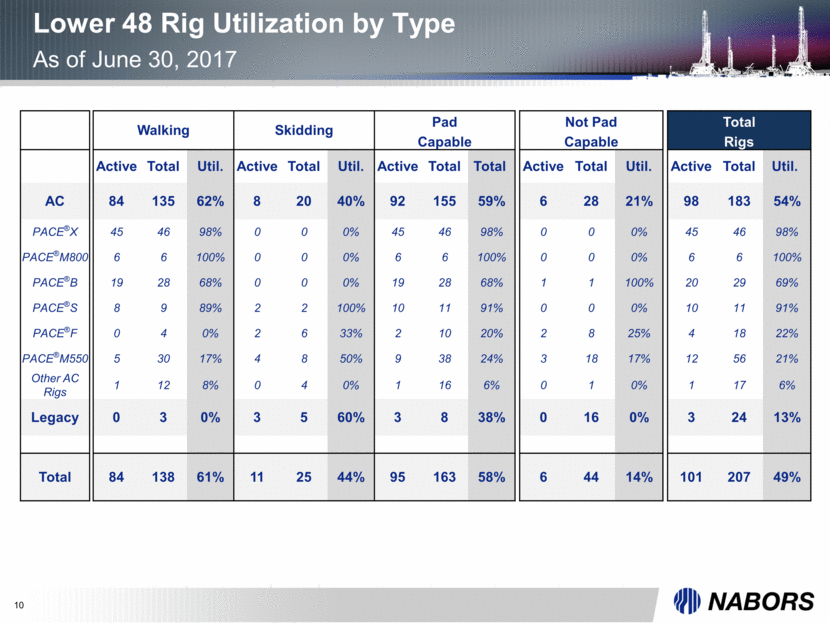
11 Nabors Working Rigs As of June 30, 2017 US 108 Colombia 8 Algeria 4 Mexico 1 Saudi Arabia 41 Venezuela 5 Kuwait 3 PNG 1 Argentina 16 Oman 4 Ecuador 2 Italy 1 Canada 11 Kazakhstan 4 India 2 Russia 1 Total = 212
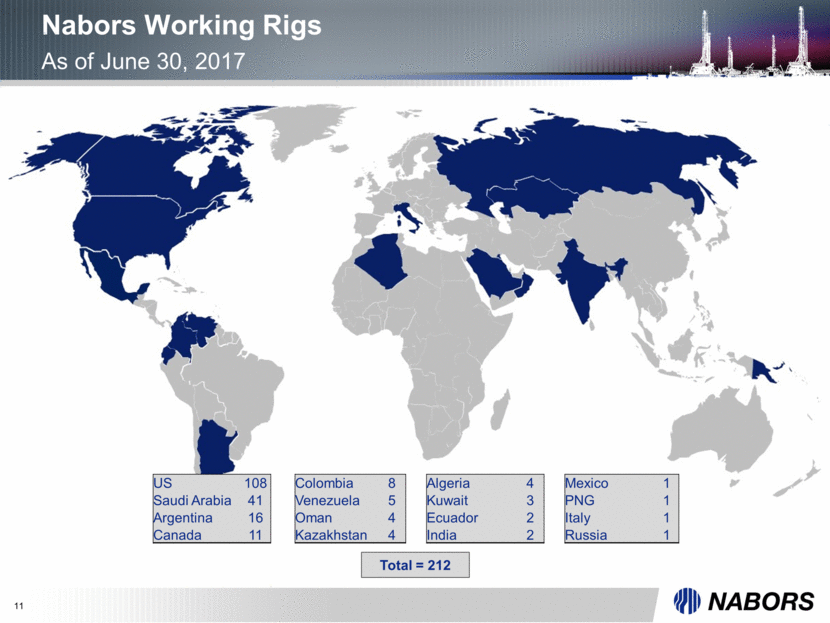
12 Saudi Arabia Joint Venture Expecting Robust Growth in Rigs and Well Count(1) (1) Saudi Aramco In-Kingdom Total Value Add presentation Future Drilling Well Count(1) “Our ability to increase supplies of natural gas to reduce the Kingdom’s reliance on liquid fuel for electricity generation and to power seawater desalination plants is vital for the country’s continued prosperity.” “To meet this challenge, we plan to nearly double our supply of gas over the coming decade to more than 20 billion standard cubic feet per day, taking clean gas to more than 70% of our utilities fuel mix” - Saudi Aramco Website Manifa Field - Saudi Arabia ~100% Increase *

13 PACE®-M1000 - The SMARTRigTM Setting the New Gold Standard for Shale Drilling Pad Optimal Capability With Automated Walking System Side-SaddleTM Configuration Hydraulic Raised Mast & Substructure Hook Load 1,000,000 lbs Setback 900,000 lbs Racking Capacity 30,000ft of 5-7/8” Drill Pipe RigtelligentTM - Integrated Operating System NDS-ReadyTM 1 2 3 4 5 1 2 3 4 6 6 5 7 8 7 8
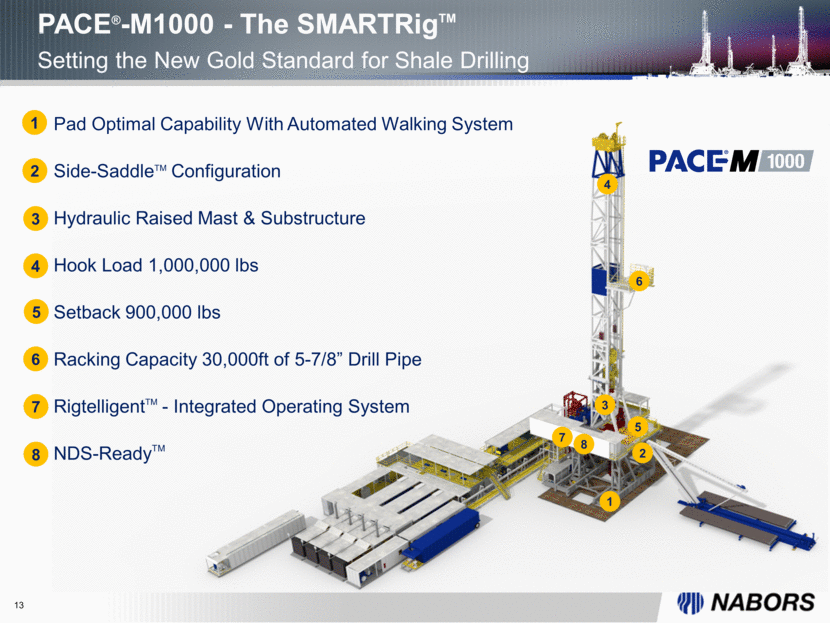
14 Decreases number of connections by 33% Extends duration where block can travel at full speed Example for a 3-well pad for customer: 900+ less connections 43~ hours saved Allows for running double joints of casing and offline casing racking Derrickman replaced by automated equipment 800k lbs Hookload & 750k lbs. Setback, 30,000 Feet of 5-7/8” drill pipe PACE®-X800 Quads Rig in the Crosby Yard during a rig show PACE®-X Quad Drilling Design Unique Design to Handle Stands of Four Drill Pipes vs. Three

15 Appendix

16 Rig Margins & Activity (1) Margin = gross margin per rig per day for the period. Gross margin is computed by subtracting direct costs from operating revenues for the period. 3Q16 4Q16 1Q17 2Q17 Drilling Margin(1) Avg. Rigs Working Margin(1) Avg. Rigs Working Margin(1) Avg. Rigs Working Margin(1) Avg. Rigs Working U.S. Drilling $8,480 57.3 $8,464 72.1 $4,484 88.8 $5,071 100.6 Canada 1,912 8.8 3,352 13.3 3,985 22.0 5,136 12.4 International 18,387 97.4 16,953 91.9 15,434 89.8 17,788 92.7
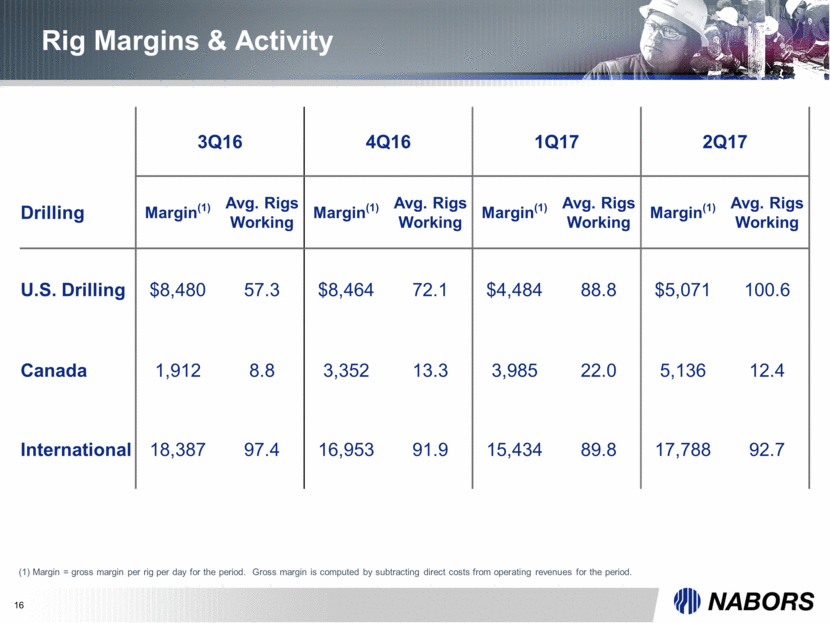
17 Reconciliation of Adjusted EBITDA to Income (Loss) from Cont. Operations Before Income Taxes Adjusted EBITDA is computed by subtracting the sum of direct costs, general and administrative expenses and research and engineering expenses from operating revenues. Adjusted operating income (loss) is computed similarly, but also subtracts depreciation and amortization expenses from operating revenues. Each of these non-GAAP measures has limitations and therefore should not be used in isolation or as a substitute for the amounts reported in accordance with GAAP. However, management evaluates the performance of its operating segments and the consolidated Company based on several criteria, including adjusted EBITDA and adjusted operating income (loss), because it believes that these financial measures accurately reflect the Company’s ongoing profitability and performance. In addition, securities analysts and investors use these measures as some of the metrics on which they analyze the Company’s performance. Other companies in this industry may compute these measures differently. A reconciliation of adjusted EBITDA and adjusted operating income (loss) to income (loss) from continuing operations before income taxes which is the nearest comparable GAAP financial measure, is provided in the table below. Three Months Ended June 30, September 30, December 31, March 31, June 30, (In Thousands) 2016 2016 2016 2017 2017 Adjusted EBITDA $165,508 $148,739 $146,021 $99,740 $138,796 Depreciation and Amortization (218,913) (220,713) (216,187) (203,672) (208,090) Adjusted Operating Income (loss) (53,405) (71,974) (70,166) (103,932) (69,294) Earnings (losses) from unconsolidated affiliates (54,769) 2 4 2 0 Investment Income (loss) 270 310 260 721 (886) Interest Expense (45,237) (46,836) (47,557) (56,518) (54,688) Other, net (74,607) (10,392) (275,270) (13,510) (10,104) Income (loss) from continuing operations before income taxes ($227,748) ($128,890) ($392,729) ($173,237) ($134,972)
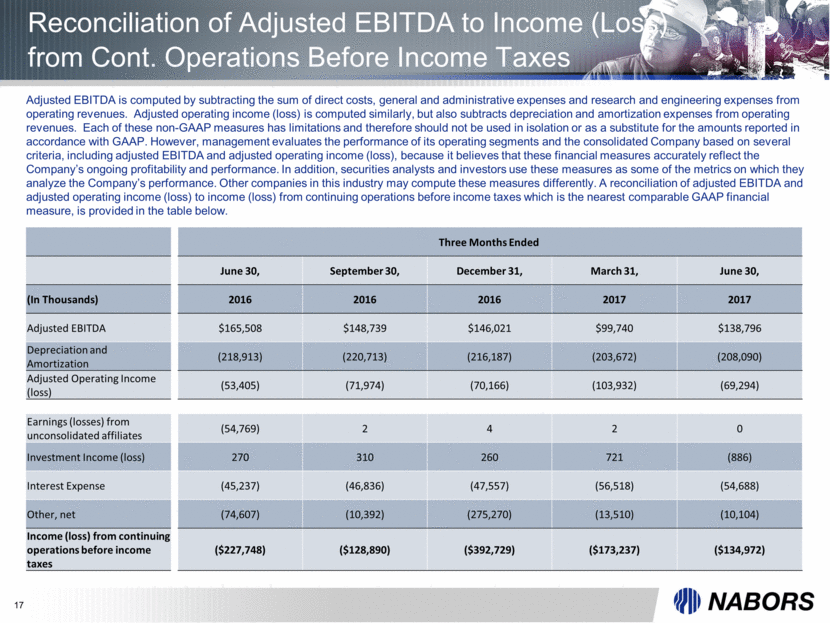
18 Reconciliation of Net Debt to Total Debt Net debt is computed by subtracting the sum of cash and short-term investments from total debt. This non-GAAP measure has limitations and therefore should not be used in isolation or as a substitute for the amounts reported in accordance with GAAP. However, management evaluates the performance of its operating segments and the consolidated Company based on several criteria, including net debt, because it believes that this financial measure accurately measures the Company’s liquidity. In addition, securities analysts and investors use this measure as one of the metrics on which they analyze the company’s performance. Other companies in this industry may compute this measure differently. A reconciliation of net debt to total debt, which is the nearest comparable GAAP financial measure, is provided in the table below. (In Thousands) March 31, 2012 December 31, 2016 March 31, 2017 June 30, 2017 Long-Term Debt $4,473,570 $3,578,335 $3,661,665 $3,740,248 Current Debt 275,616 297 313 124 Total Debt $4,749,186 $3,578,632 $3,661,978 $3,740,372 Cash & Cash Equivalents $354,022 $264,093 $200,688 $196,567 ST Investments 139,950 31,109 27,907 35,476 Net Debt $4,255,214 $3,283,430 $3,433,383 $3,508,329
